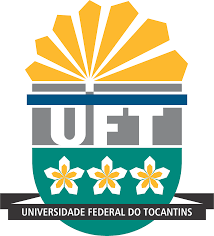O entorno do rio Azuis é considerada a de maior importância espeleológica do estado do Tocantins, e possui esse nome por apresentar águas cristalinas e com tons azulados. Tais características se relacionam por situar em uma área cárstica. As paisagens cársticas estão expostas, de forma direta e indireta, às diversas ações humanas, resultando em sua degradação, podendo afetar até mesmo além de seus limites. Assim, o objetivo deste trabalho é analisar a paisagem cárstica no entorno do rio Azuis, propondo reflexões sobre sua dinâmica na conjunção Físico-Social. A proposta da pesquisa visa a caracterização das feições cársticas do entorno do rio Azuis, identificando as dinâmicas na paisagem geradas pela evolução histórica da ocupação e a contextualização física do ambiente, além da produção de um mapa geomorfológico do carste com escala detalhada (1:25.000) para identificação de suas feições, buscando o entendimento das características físicas da área a partir da tríade materiais – processos – formas, além de levantar dados para um diagnóstico e gestão ambiental. Para tanto, foram realizados trabalhos de campo com o intuito de analisar e descrever a paisagem, como esta tem sido transformada pelas ações humanas e seus processos atuantes, além de aplicação de entrevistas do tipo semiestruturada aos moradores locais. Várias feições cársticas foram identificadas, expostas a várias ações humanas, comprometendo sua dinâmica natural. Foram encontrados inúmeros problemas no que diz respeito a ausência de gestão ambiental, não apenas pelo fato da presença de atividade turística, como também várias outras atividades, e com base na percepção dos moradores, a paisagem sofreu e ainda sofre inúmeras mudanças que afetam o Azuis e o sistema cárstico em geral. É necessário a execução de um Plano de Manejo que vise todos os cuidados referentes as questões ambientais amparadas na legislação ambiental, juntamente com fiscalização dos órgãos responsáveis. O mapa geomorfológico do carste proporcionou uma análise detalhada dos elementos do relevo, priorizando suas feições estruturais, o qual possibilitou descrever os processos atuantes. Portanto, mesmo sendo reduzido o recorte espacial de estudo, é uma área que apresenta grandes potencialidades espeleológica, geomorfológica e turística, além de proporcionar inúmeras possibilidades de estudo futuros no contexto da Geografia Física, não somente o município de Aurora do Tocantins, mas sim toda a região sudeste do Estado do Tocantins.
River Azuis is neighbours one of the most speleological importance area in the state of Tocantins, and this name azuis blue is reference to crystalline waters and blue tones waters. Such characteristics are related by its location in a karst area. The karst landscapes are exposed, directly and indirectly, to the various human actions, resulting in its degradation, and being able to affect even beyond its limits. Thus, the objective of this work is to analyze the karstic landscape in the surroundings of the river Azuis, proposing reflections on its dynamics in the Physical-Social conjunction. The proposal of this research is identifying the dynamics in the landscape generated by the historical evolution of the occupation and the physical contextualization of the environment, as well as the production of a geomorphological map of karst with detailed scale (1: 25,000) to identify its features, seeking to understand the physical characteristics of the area from the triad materials – processes – forms, in addition to raising data for environmental diagnosis and management. In order to do so, fieldwork was carried out to analyze and describe the landscape, as it has been transformed by human actions and its active processes, as well as the application of semi-structured interviews to local residents. Many karstic features were identified, exposed to various human actions, compromising their natural dynamics. Numerous problems were found regarding the absence of environmental management, not only due to the presence of tourist activity, but also several other activities, and based on the perception of the residents, the landscape suffered and still suffers from numerous changes that affect the Azuis and the karst system in general. It is necessary to implement a Management Plan that addresses all the care related to environmental issues covered by environmental legislation, alongside the supervision of the responsible agencies. The geomorphological map of the karst provided a detailed analysis of the elements of the relief, prioritizing its structural features, which made it possible to describe the active processes. Therefore, it is an area that presents great speleological, geomorphological and tourist potentialities, as well as providing numerous future study possibilities in the context of Physical Geography, not only the municipality of Aurora do Tocantins, but the entire southeastern region of the State of Tocantins.

